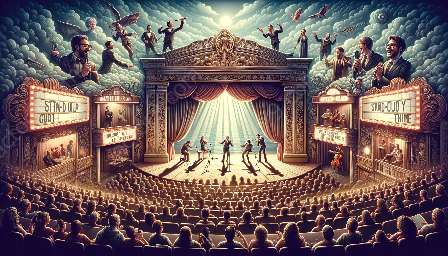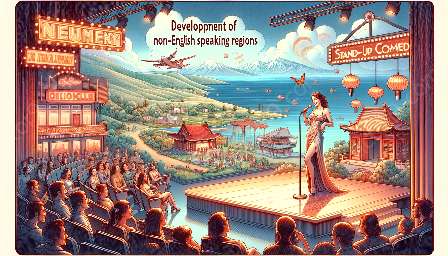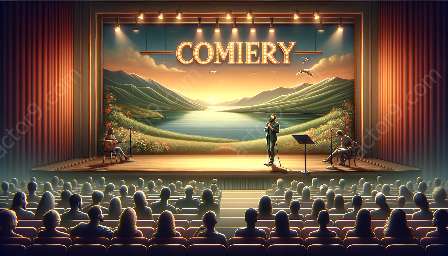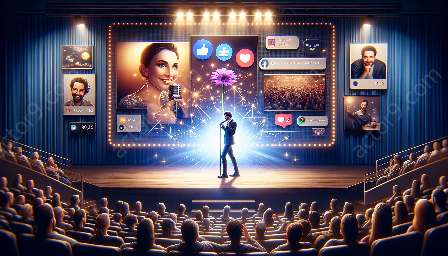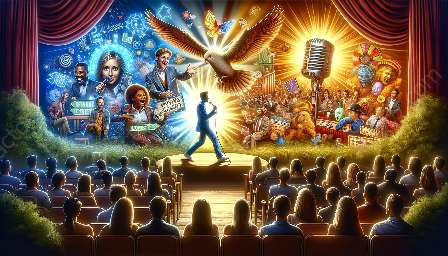Improvisation plays a crucial role in the world of stand-up comedy and storytelling performances. Both art forms rely heavily on the performer's ability to think on their feet, react to the audience, and create spontaneous moments that engage and entertain. In this topic cluster, we will delve into how improvisation contributes to the success of stand-up comedy and storytelling, the techniques used by performers to improvise, and the impact of improvisation on audience experience.
The Importance of Improvisation in Stand-up Comedy
Stand-up comedy is a unique form of entertainment that often involves a solo performer addressing a live audience. While some comedians may meticulously plan their material, improvisation adds a layer of unpredictability and excitement to their acts. When a comedian interacts with the audience, responds to unexpected situations, or introduces spontaneous anecdotes, it creates a sense of connection and authenticity that resonates with the crowd.
Enhancing Authenticity and Spontaneity
One of the primary roles of improvisation in stand-up comedy is to amplify the authenticity and spontaneity of the performance. Audiences appreciate the raw and unscripted nature of improvisational moments, as it allows them to witness the comedian's quick wit and ability to navigate unpredictable scenarios. This authenticity fosters a sense of shared experience between the performer and the audience, making the comedy more relatable and engaging.
Creating Memorable Moments
Improvisation also plays a vital role in creating memorable moments in stand-up comedy. When a comedian successfully improvises a joke or responds cleverly to an audience member, it lingers in the minds of the audience, adding an element of unpredictability and uniqueness to each show. These spontaneous moments can become highlights of the performance, contributing to the overall entertainment value.
The Impact of Improvisation in Storytelling Performances
Storytelling performances, whether in the form of solo shows or group narratives, benefit greatly from the inclusion of improvisation. Unlike scripted plays or traditional presentations, storytelling allows for flexibility and adaptability, making improvisation an invaluable skill for performers to master.
Engaging the Audience in the Narrative
Improvisation in storytelling performances serves the purpose of engaging the audience in the narrative. By incorporating spontaneous elements, such as ad-libbed dialogue or unforeseen plot twists, storytellers can captivate their listeners and keep them invested in the unfolding tale. This interactive approach fosters a sense of shared storytelling, where the audience feels like active participants rather than passive observers.
Heightening Emotional Impact
When storytellers improvise within their performances, they have the opportunity to heighten the emotional impact of their tales. By adapting their delivery based on audience reactions or adding personal touches in the moment, storytellers can infuse their narratives with authenticity and emotional resonance. This creates a more immersive and affecting experience for the audience, bringing the stories to life in a compelling and unpredictable manner.
Techniques Used for Improvisation
Both stand-up comedy and storytelling performances require specific techniques for effective improvisation, and performers often hone these skills through practice and experience. Some common techniques include:
- Listening and Reacting: The ability to actively listen to audience responses or cues and respond in real-time is essential for successful improvisation.
- Building on Spontaneous Ideas: Performers use improvisation to build on unexpected ideas or reactions, creating a continuous flow of humor or narrative intrigue.
- Physical and Verbal Flexibility: Adaptability in physical gestures, facial expressions, and verbal delivery allows performers to effectively integrate improvised elements into their acts.
- Embracing Risk: Effective improvisers embrace the risk of uncertainty, using it as an opportunity to surprise and entertain themselves and the audience.
Conclusion
Improvisation serves as a cornerstone of stand-up comedy and storytelling performances, injecting spontaneity, authenticity, and engagement into the live entertainment experience. By embracing improvisation, performers have the opportunity to create unforgettable moments and connect with their audiences on a deeper level. Whether through the quick wit of a comedian or the evocative storytelling of a performer, improvisation enriches the art of live performance and ensures that no two shows are ever the same.


